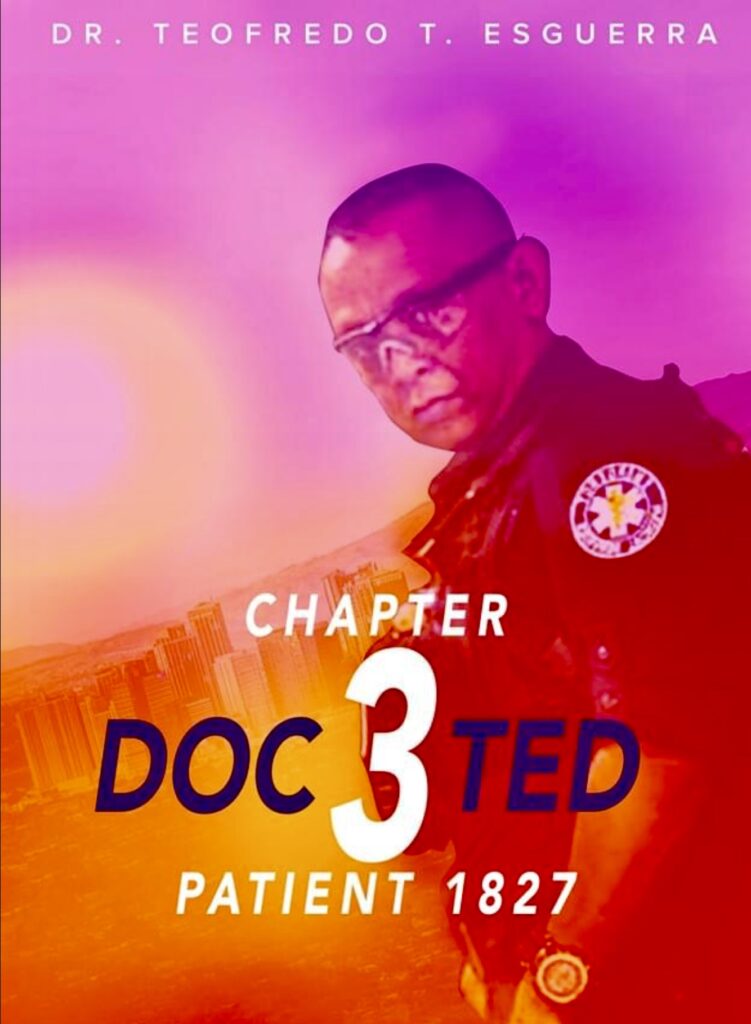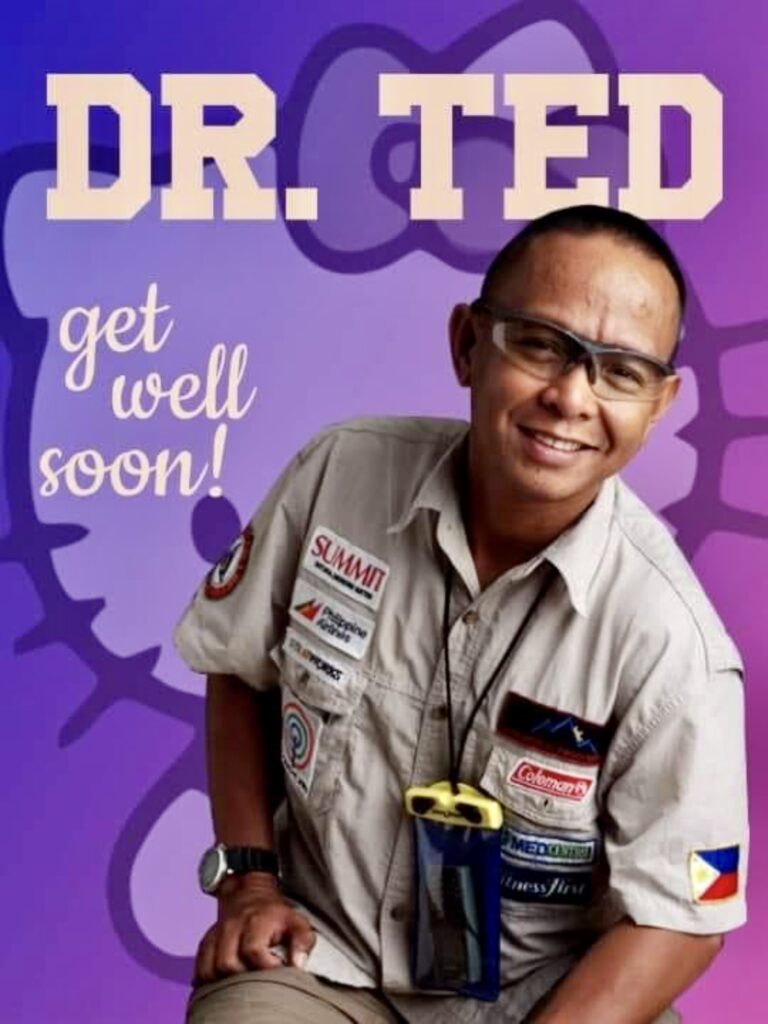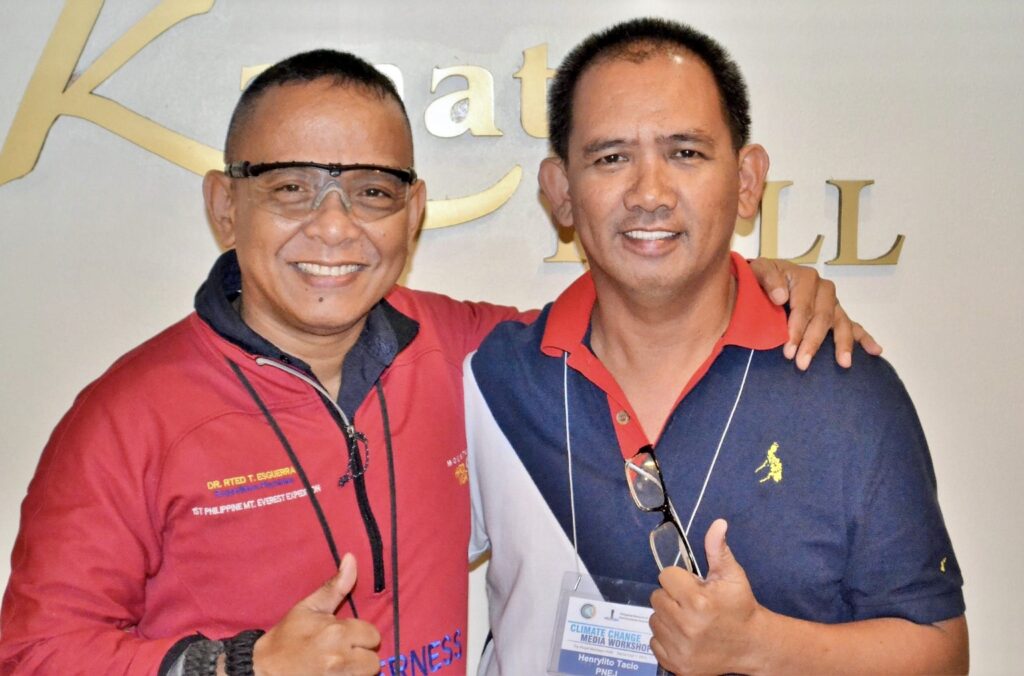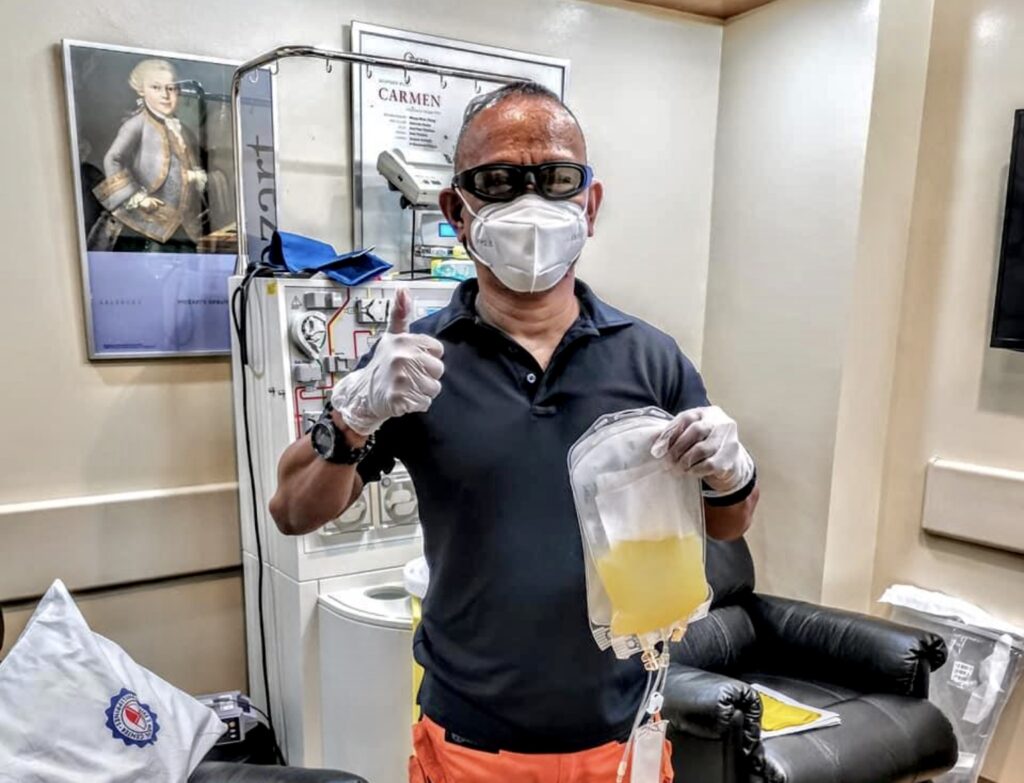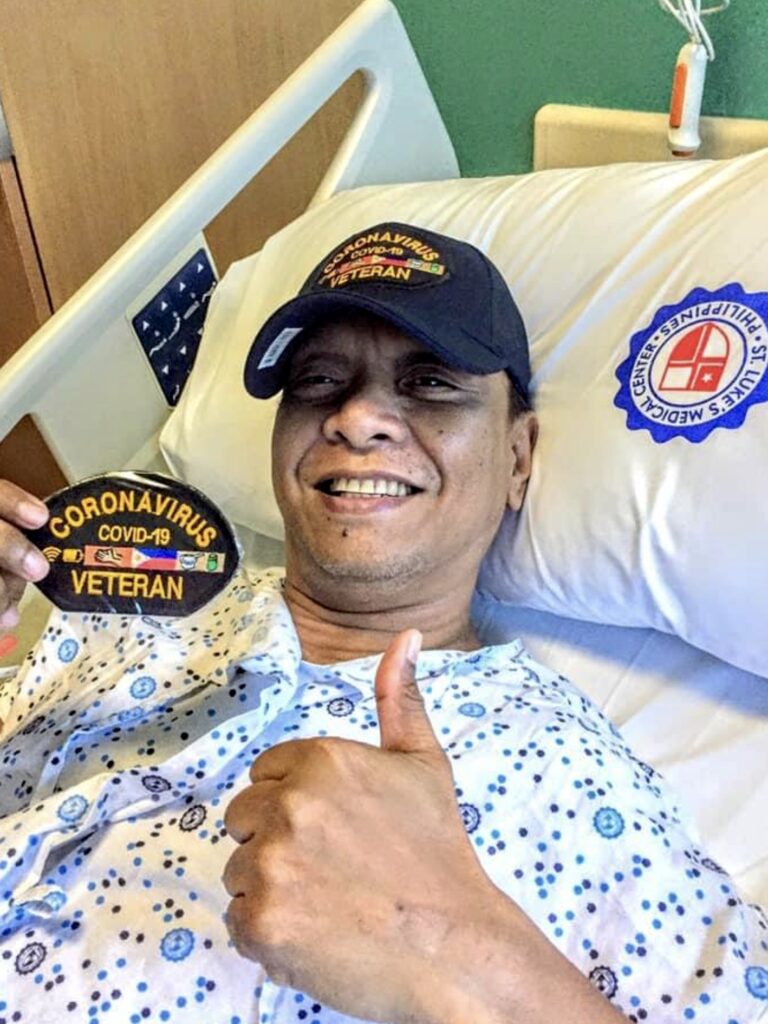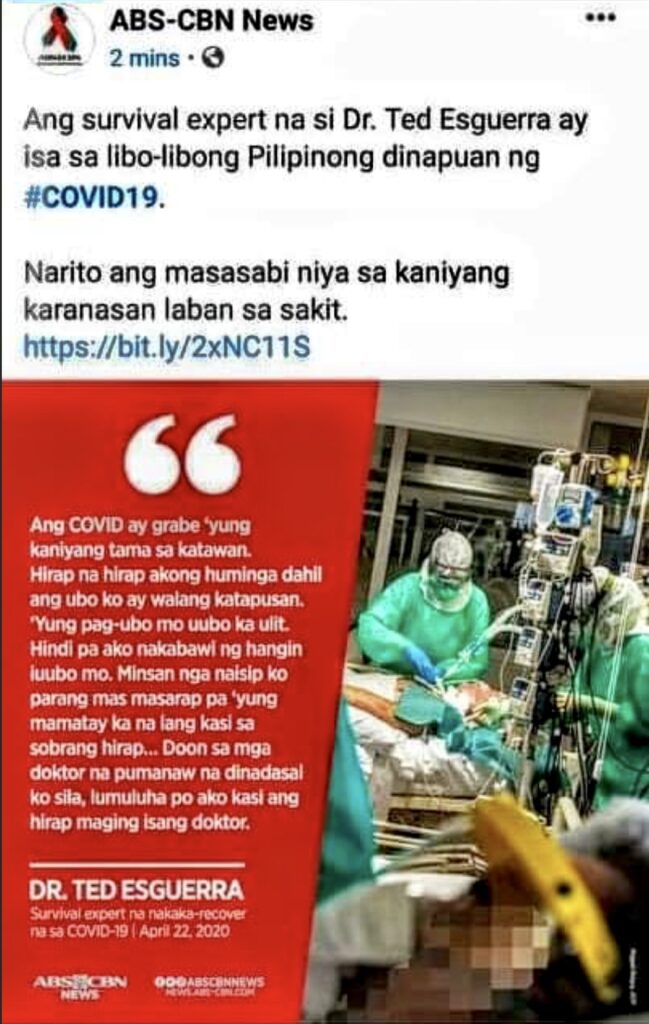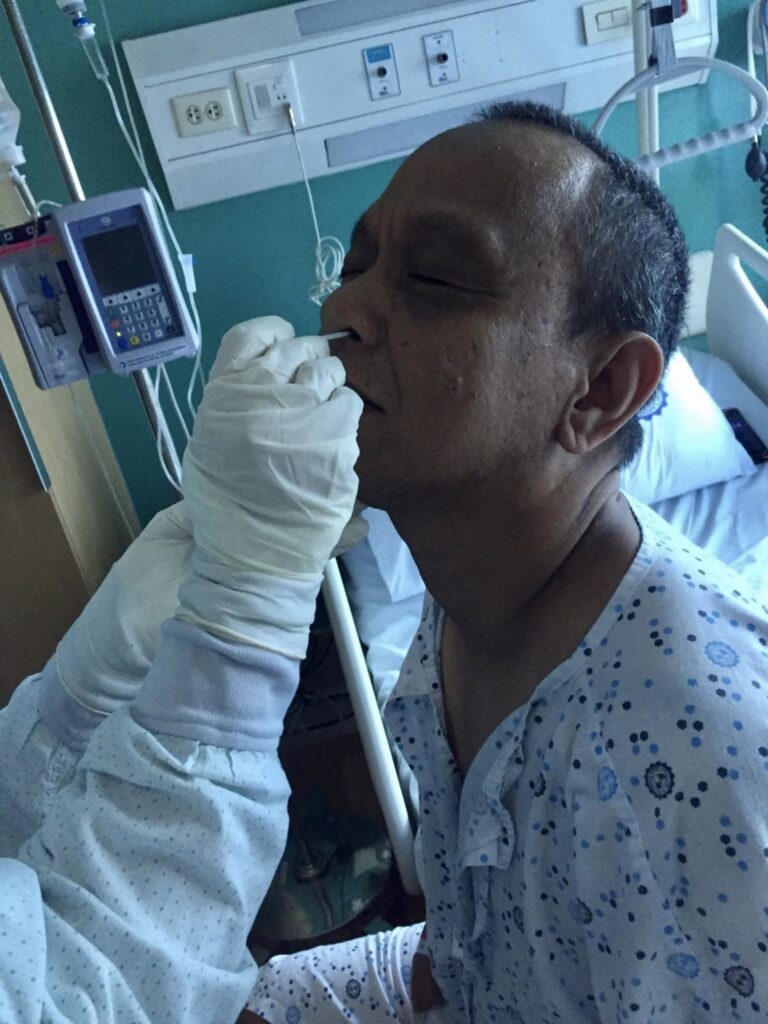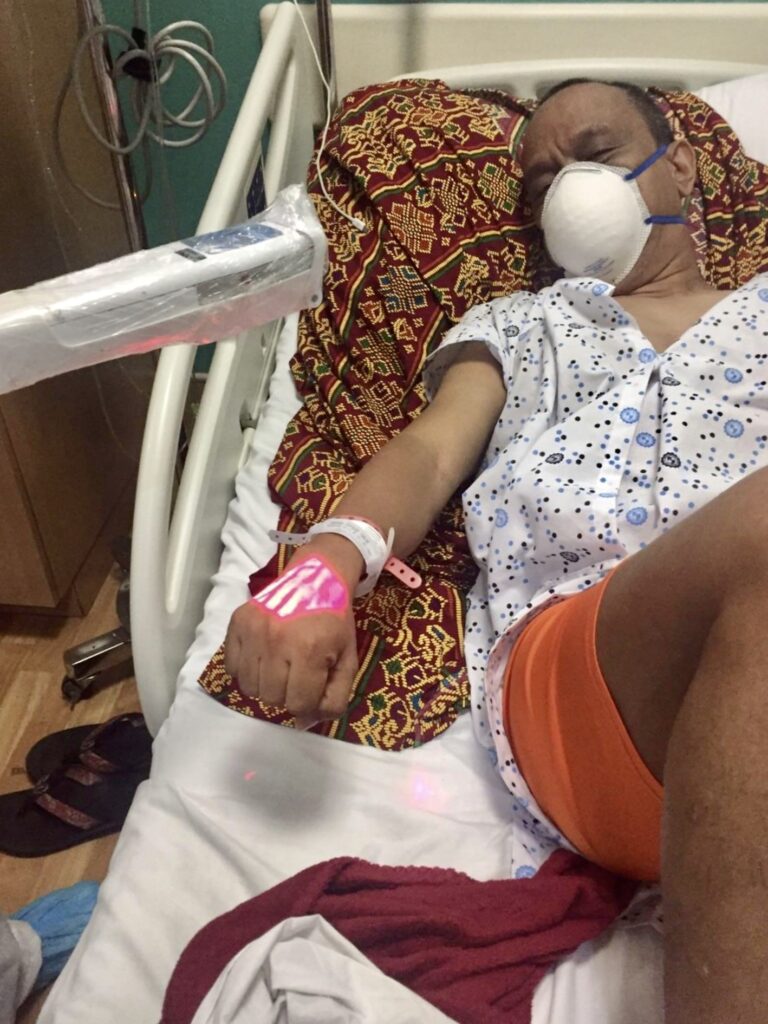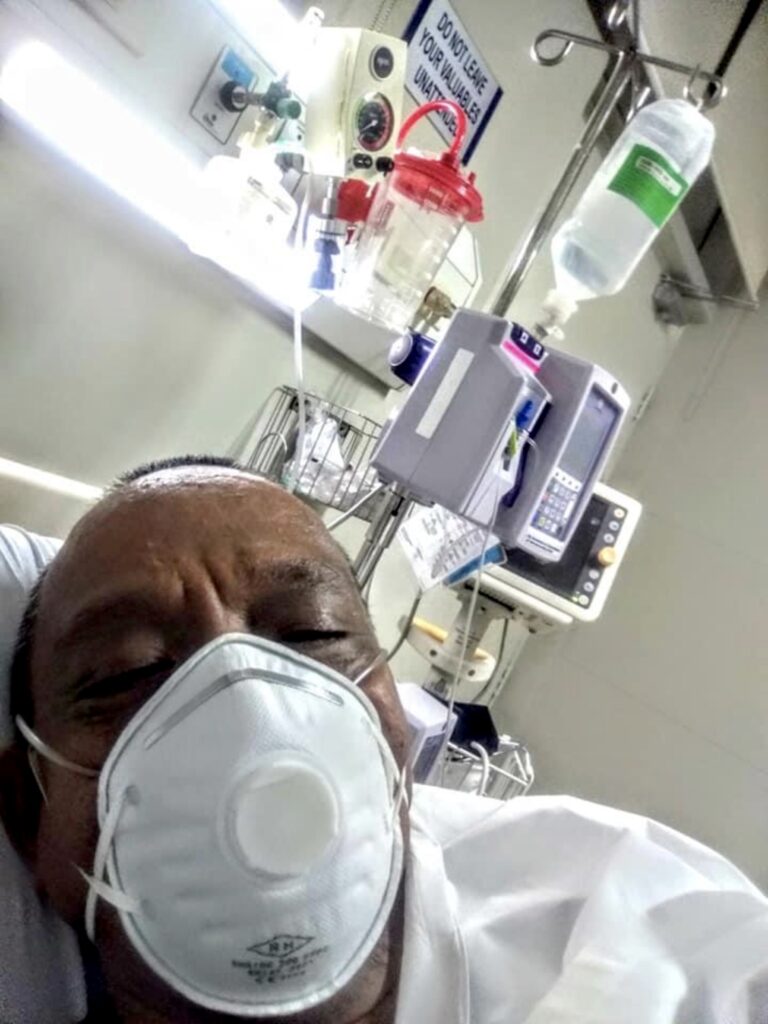Text by Henrylito D. Tacio
Photos courtesy of Dr. Teofredo Esguerra
Dr. Teofredo “Doc Ted” Esguerra, an advisory council member at the International Disaster Response Network, and I have four things in common.
We were both born in Bansalan, now a first-class municipality of Davao del Sur.
We were both recipients of the Outstanding Bansaleño Award, given to those born or live in the town who have brought honors to the municipality, excelled in their chosen profession, or uplift the standard of living of people.
We both attended the Southern Mindanao Academy (now known as South Philippine Adventist College), a school-based in Matan-ao, Davao del Sur.
Just recently, we had another one thing in common: We were both infected with SARS-CoV-2, the distant cousin of the coronavirus that causes the severe acute respiratory syndrome. SARS-CoV-2 causes coronavirus disease 2019 (COVID-19).
While I experienced mild symptoms (I still had to undergo the mandatory 10-day isolation at a government quarantine facility, Doc Ted’sTed’s case was severe, here is his story:
Doc Ted was infected with the dreaded virus around the first week of March in 2020. He believed he got it when he drove his wife, who is also a doctor, to and from work due to lockdowns.
“My wife works as a frontline physician in a government hospital,” Doc Ted said. “While being with her, I was getting viral load little by little until symptoms surfaced on March 20.”
Among the initial symptoms, he experienced were dry cough, body pain, and on-and-off fever. Not only that, but he also lost his sense of taste and had to lie in a prone position to sleep.
Doc Ted was tested on March 25 and got the result on the 30th. He was immediately admitted to St. Luke’sLuke’s Medical Center in Global City the following day.
The old folks living with the couples were not infected since, as early as February, they were already in isolation due to the nature of their work. “We understood the situation early on,” he pointed out. “I was already working from home mode, so that chances of getting ill were low. Except that I had to drive my wife from the hospital to the house.”
Upon admission, he was given lots of medicines, which are no longer given to COVID-19 patients with pneumonia. “I was in the experimental phase of it being one of the first batches of doctors who was hit by the disease,” he recalled. “I was worsening despite of the medicines given.”
His dry cough worsened (“like there was no stopping”), which brought his oxygen saturation down. “It was so agonizing that I was hooked on supplemental oxygen 24/7,” Doc Ted said.
As he told a television network, “Ang COVID ay grabe ‘yung tama sa katawan, hirap na hirap akong huminga dahil ang ubo ko ay walang katapusan. Hindi ka pa nakakabawi ng hangin, uubo ka ulit. Parang mas masarap pa na mamatay ka na lang kasi sobrang hirap.”
Despite all the medications, his chest x-ray results were worsening (“infiltrates were slowly eating the whole of my lung fields”). So, he was transferred to an isolation room where he slowly developed nightmares. He attributed those frightening dreams to low oxygen levels – despite the fact that he adjusted the delivery (liters per minute) at the maximum.
As days passed by, Doc Ted was not getting better. So did something. “I already know I was prepped up for the intensive care unit,” he said. Still confined in the isolation room, he was able to change his maneuver by taking a hot bath (as he can remove the attachments of monitors and the fluid around him).
While having a hot shower for one-and-a-half hours, he tried to hit his upper back with the hot water. “This maneuver gave me a relief in doing deep breathing as part of my breathing yoga,” he said. “Slowly, I was increasing my oxygen saturation.”
Simultaneously, he shifted his diet into fruits, vegetables, and fish meat at times. From then on, he used his IV pole to “scooter” around as part of his exercise – aside from doing sit-ups, push-ups, and breathing yoga.
“The little window in my isolation room allowed me to expose my back to the morning sun for 20 minutes,” he said. “Every time the doctor and nurses would visit me, I would do my breathing yoga and remove my supplemental oxygen and show them the good saturation reports to convince them that I was not an ICU case.”
Even though he was in a dire situation, he still managed to post some updates about his situation on his Facebook account. He received lots of well wishes from all walks of life: from simple jeepney drivers to the famous Dr. Scott Parazynski, an astronaut with the International Space Station.
Doc Ted also got some words of encouragement from friends, colleagues, and fellow doctors. Among the famous personalities who sent him messages were actor Matteo Guidicelli, singer Freddie Aguilar, and television host Kim Atienza (who followed his daily updates of his ordeal).
“My Facebook wall became a source of inspiration to those who were suffering like me because I was posting about hope, about humanity, about family, about life,” Doc Ted said. “I told myself that even if I die (since I accepted it already and was ready as I was having extreme difficulty in breathing), I would fight it out to my last breath.”
Even if he was on the brink of death, he still would like to do humanitarian work. As he received hundreds of messages from all over the world, he decided to share what he had learned in beating the virus.
Doc Ted called it NEW PASSES. Actually, it’s an acronym, which stands for N (nutritious food), E (exercise), W (water for hydration and hygiene), P (prescribed supplements and medicine), A (away from vices and anxieties), S (sleep), S (sunshine), E (evergreen in an elevation), and S (saltwater bathing and sea breeze).
“I reckon that the first thing you need is a healthy body to have a healthy immunity,” he explained.
Doc Ted was confined at St. Luke’sLuke’s Medical Center for 20 days. He was brought to Eugenio Lopez Center in Antipolo for his post-confinement 14-day quarantine. From the time he was discharged, and during his quarantine phase, his reverse transcription-polymerase chain reaction (RT-PCR) was always positive. It took three weeks after his mandatory 14-day quarantine that he showed negative two results (he had weekly RT-PCR).
After that near-death experience, Doc Ted believed that health is indeed wealth. “I learned how a crude virus was able to bring me to my knees and realize how fragile life is,” he admitted. “I became closer to myself, closer to God, closer to my family, closer to nature, and closer to humanity.”
When asked for his final words, Doc Ted replied: “The war to survive, thrive, and live is not yet over. So, I would like everyone to apply what I learned in life along the ordeal I was into. Like humanity, I am still into the warrior mode in getting out of this quagmire despite the fact I got vaccinated. The danger is still up.”
Doc Ted also provided his 12 commandments against COVID-19:
C – Cover your mouth and nose properly with an appropriate mask and, if possible, with a face shield;
O – Observe frequent hand washing (with soap and water) or hand sanitizing;
M – Mind the physical distancing norms (6 feet apart), the coughing and sneezing etiquette;
M – Minimize face-to-face interaction;
A – Avoid touching your face, particularly the mouth, eyes, or nose;
N – Never stay or move away quickly from crowded areas.
D – Do not go out of your house unless it is necessary. If you need to go out to attend a meeting, limit to 30 minutes if it is in an enclosed area; room capacity should only be 50% of the usual room occupancy;
M – Minimize or avoid contact with frequently-touched public materials (e.g., knobs, toilet faucets) or common public surfaces (e.g., rails, counter/teller platform). Use foot, back of hand or elbow to open doors, use ”finger knuckle”, or use ”extensions” in pressing ATM and elevator buttons;
E – Emphasize in having air movement inside a vehicle (2-3 inches opening with or without aircon) or in enclosed rooms by opening windows or doors to allow ventilation (better if with fans to form wind corridor);
N – Never forget to sanitize item/s frequently used or handled (cellular phone, car keys, computer keyboard). Never forget to secure in a small plastic bag or simply fold properly used mask, gloves, or any PPE before throwing it in the trash bin;
T – Try not to eat while in public transport and not to smoke in the crowded smoking areas; and
S – Secure cashless transactions. If you’re riding a commuter vehicle, bring the exact fare.


